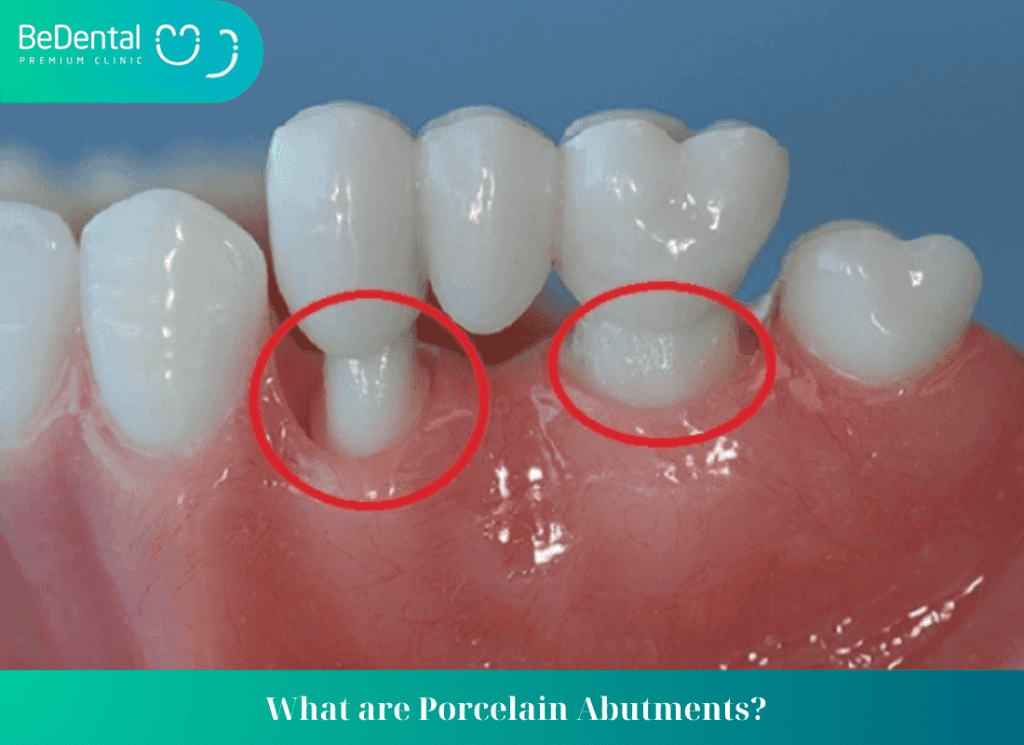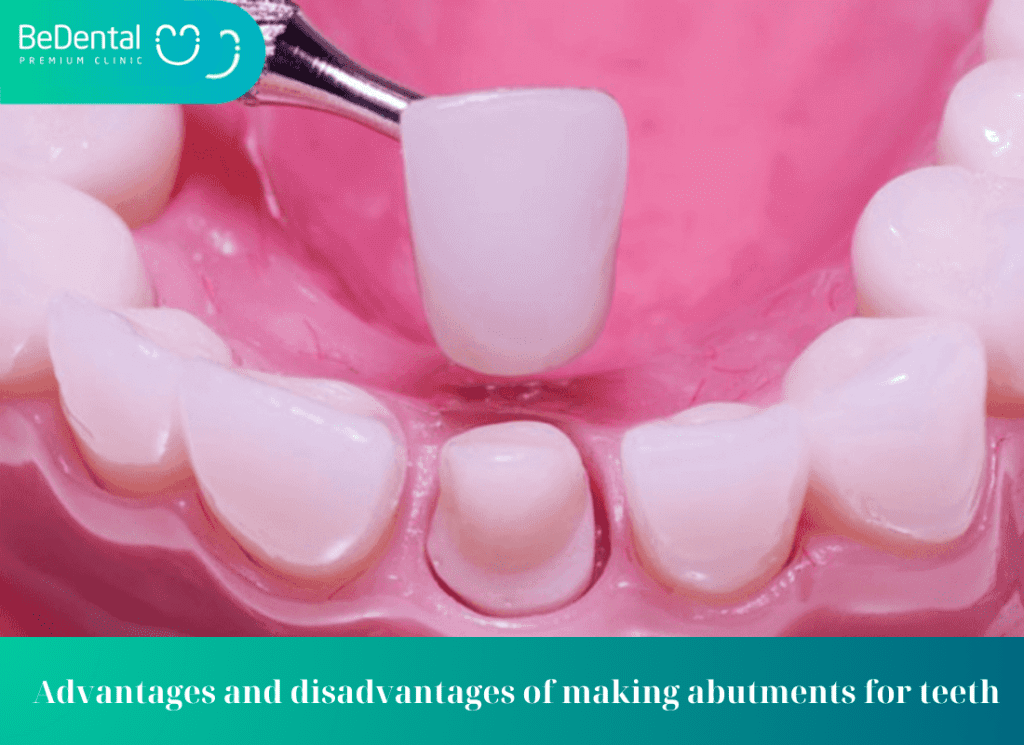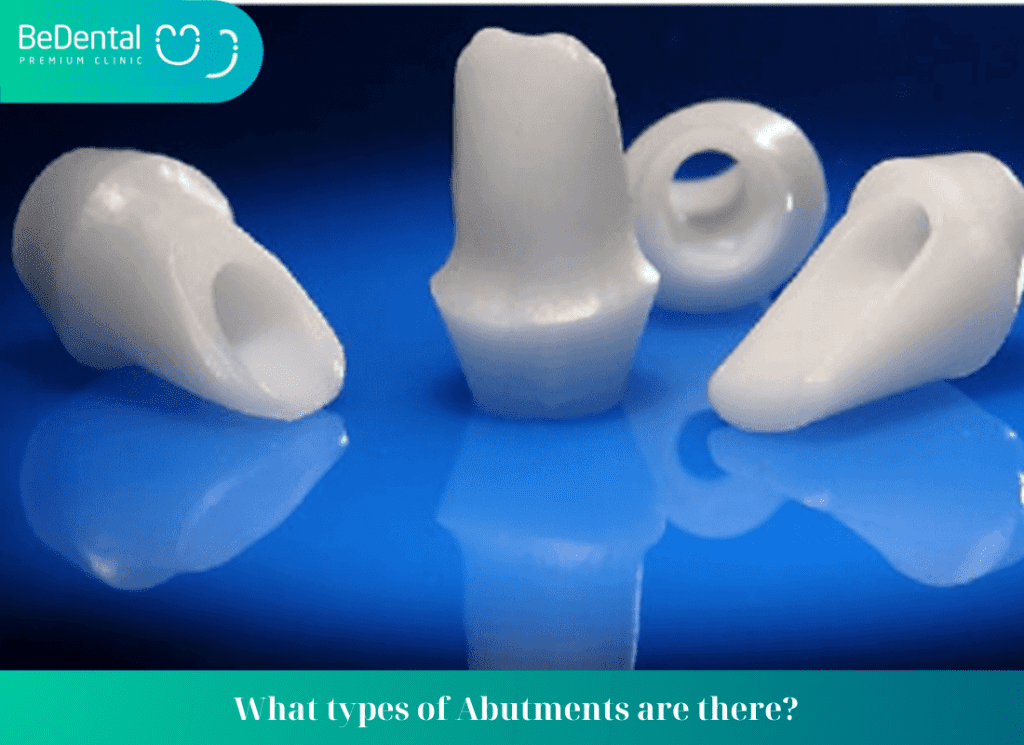To attach porcelain crowns to teeth, dentists often have to grind down the natural tooth structure. However, in some cases, dentists may recommend the use of abutments. So, what are Porcelain Abutments in Vietnam? When should this method be applied? Let’s explore and answer these questions in the following article!
What are Porcelain Abutments in Vietnam?
To cover teeth with porcelain, dentists need to grind down the natural tooth to create a stump. Then, porcelain crowns are attached to the outside to complete the porcelain veneering process. However, in cases such as teeth that have undergone multiple root canal therapies, severely decayed teeth, or enamel damage to the extent that there is not enough enamel to grind down, dentists will use abutments in Vietnam.
Simply put, abutments in Vietnam are a simulated version of real tooth stumps. They are created to make the tooth stronger and provide a base for the external porcelain crown. Porcelain abutments in Vietnam can be made from various materials and come in different sizes depending on the condition of each individual’s teeth.
See more: Should childen get porcelain teeth?

Why is it necessary to use porcelain abutments?
In some cases, teeth are damaged, severely decayed, and no longer have enough surface contact for porcelain crowns. At this point, abutments in Vietnam are needed to replace the real tooth structure. Abuttment in Hanoi is securely attached to the remaining root structure and act as a solid support for the external porcelain crown restoration. This is considered a necessary and effective solution for preserving and restoring teeth.
When should Porcelain Abutments be attached?
Among customers, there are cases where teeth are severely decayed, much of the tooth structure is lost, have undergone root canal treatment, or the enamel is severely damaged. In these situations, if tooth stumps are not restored, porcelain crowns cannot be applied.
In addition, to attach abutments in Vietnam, certain conditions must be ensured such as:
- The real tooth base must be intact and firm.
- There should be no gum inflammation.
- The surrounding gum tissue and bone must be healthy.
- The tooth pulp should not be infected or necrotic.
To determine whether you need abutments in Vietnam or not, visit reputable dental clinics. Here, with the support of professional dentists and modern equipment, you will be advised on the most suitable method for your dental condition.
See more: Darkened gums after dental crowns
Advantages and disadvantages of making abutments for teeth
Attaching abutments in Vietnam is a convenient solution to address issues with the shape of teeth in specific cases. Simply placing the porcelain crown over the stump and then cementing it onto the real tooth base gives you a complete porcelain tooth.
The advantages of making abutment in Vietnam include:
- It is the best method for cases where the enamel is severely damaged, has undergone root canal treatment, and the real tooth cannot be ground down to create tooth stumps.
- The process is simple and not complicated. Creating the stump and attaching the porcelain crown results in a complete porcelain tooth.
- Minimizes impact on the jawbone as there is no need to extract teeth, effectively preventing diseases without affecting oral health.
- No invasion or impact on neighboring teeth.

Disadvantages of making abutments in Vietnam for teeth include:
- The lifespan of abutment in Vietnam is usually low, they need to be replaced if signs of gum line darkening or porcelain crown falling off occur.
- Porcelain abutments in Vietnam can break if eating very hard foods.
- To accurately assess the condition of your teeth, you should visit reputable dental clinics in person, equipped with X-ray machines to determine the most appropriate treatment method.
What types of abutments are there?
Currently on the market, there are 3 common types of abutments: metal abutments, metal-covered ceramic abutments, and all-ceramic abutments. Each type of abutments in Vietnam has its own unique advantages, depending on your specific needs, you can choose the most suitable type for yourself.
Metal abutments
Metal abutement near me, also known as standard abutments, are made from alloys such as Chrome – Titanium – Cobalt or Nickel – Chrome – Titanium. Metal abutments usually have relatively stable fit with teeth and gums.
The advantages of metal abutments include low cost and good load-bearing capacity. However, metal abutments are often not highly regarded in terms of aesthetics. Therefore, they are usually used for teeth in the inner part of the jaw. The average lifespan of metal abutments is usually from 5 to 7 years.
Metal-covered ceramic abutments
Metal-covered ceramic abudment in HCM city consist of two layers: a metal frame similar to regular metal abutments and an outer layer of bright white Ceramco3 porcelain. In addition to high durability, this type of abutments also addresses aesthetic concerns.
However, the metal component in this abutments may oxidize over time, leading to gum line darkening. The average lifespan of metal-covered ceramic abutments is from 7 to 10 years.
See more: Popular lava porcelain tooth color chart
All-ceramic abutments (Cercon)

Unlike metal abutments, all-ceramic abutments are made entirely from 100% pure porcelain. This is a popular type of abutments preferred by many customers for its outstanding advantages. All-ceramic abutments are highly aesthetic, not causing gum line darkening.
In particular, they have good adaptability in the oral environment, do not cause irritation, and ensure safety when used. With natural white color and superior load-bearing capacity compared to real teeth, all-ceramic abutments are suitable for both incisors and molars. The lifespan of this type of abutments is very high. If properly cared for, they can last up to 20 years.
Is it painful to have abutments?
The pain when attaching abutments depends on the skill of the dentist. If the dentist is not accurate in determining the position and direction of attachment, it can cause pain and even complications for the patient.
However, when it is necessary to attach abutments, you do not need to worry excessively. Just choose a reputable dental clinic, all dental techniques are supported by anesthesia, helping the process of attaching abutments to proceed safely without causing pain.
See more: How much does dental filling cost?
Safe procedure for attaching abutments
Step 1: General check-up
Before starting to attach abutments, the dentist will conduct a check-up and examine the condition of your teeth and mouth. Based on the examination results, X-rays may be needed to determine the exact condition. Depending on the specific situation, the dentist will advise on the most suitable type of abutments.
Step 2: Taking impressions for abutments
Based on the information from the check-up, the dentist will decide on the treatment plan if needed. This process needs to be completed before attaching abundment in HCM city. After completing the root canal treatment, the dentist will take impressions to create a suitable abutments for you.
Step 3: Attaching the abutments to the tooth
Before permanent attachment, the dentist will try the abutments to ensure the perfect size. Then, the stump will be permanently attached using specialized materials.
This article has helped you answer the question of what are ceramic abutmant in Hanoi. Wishing you a smooth and successful treatment process!
See more: Do porcelain crowns cause gum recession?
Most asked questions
Can abutments be used for any type of tooth replacement?
Abutments in Vietnam can be used for various types of tooth replacement, including single tooth replacements, multiple tooth replacements, and even full arch replacements. They are commonly used for dental crowns, bridges, and even dental implants. The type of abutments in Vietnam selected will depend on the individual’s specific dental needs and the recommendation of their dentist. It is important to consult with a dental professional to determine the most suitable option for your tooth replacement.
How can I ensure the longevity of my abutments?
To ensure the longevity of your abutments in Vietnam, consider the following tips:
- Practice good oral hygiene: Brush your teeth at least twice a day and floss daily to prevent plaque buildup and maintain the health of your gums.
- Visit your dentist regularly: Schedule regular check-ups and cleanings to monitor the condition of your abutments and address any issues early on.
- Avoid hard foods: Be cautious when eating hard or sticky foods that can potentially damage your abutments.
- Wear a mouthguard: If you participate in activities that may put your teeth at risk, such as sports, consider wearing a mouthguard to protect your abutments.
- Avoid smoking and excessive alcohol consumption: These habits can impact the longevity of your abutments and overall oral health.

- Follow post-treatment care instructions: If you have recently had abutments installed, follow any specific care instructions provided by your dentist to ensure proper healing and maintenance.
By following these tips and maintaining good oral habits, you can help prolong the lifespan of your abutments tooth stumps and enjoy a healthy smile for years to come.
See more: What are the cost of braces?
Conclusion
In conclusion, choosing the right type of abutments in Vietnam is crucial for both aesthetics and functionality. While metal abutments offer durability and cost-effectiveness, all-ceramic abutments in Vietnam stand out for their high aesthetic appeal and biocompatibility.
The process of attaching abutments in Vietnam can be painless with the right dentist and proper care. It is important to undergo thorough examinations, choose a reputable dental clinic, and follow the recommended treatment plan for the best results. Ultimately, whether opting for metal or all-ceramic abutments, the goal is to restore your smile and oral health effectively and safely.
Tư vấn chuyên môn bài viết:
BÁC SĨ DƯƠNG THỊ THÙY NGA





